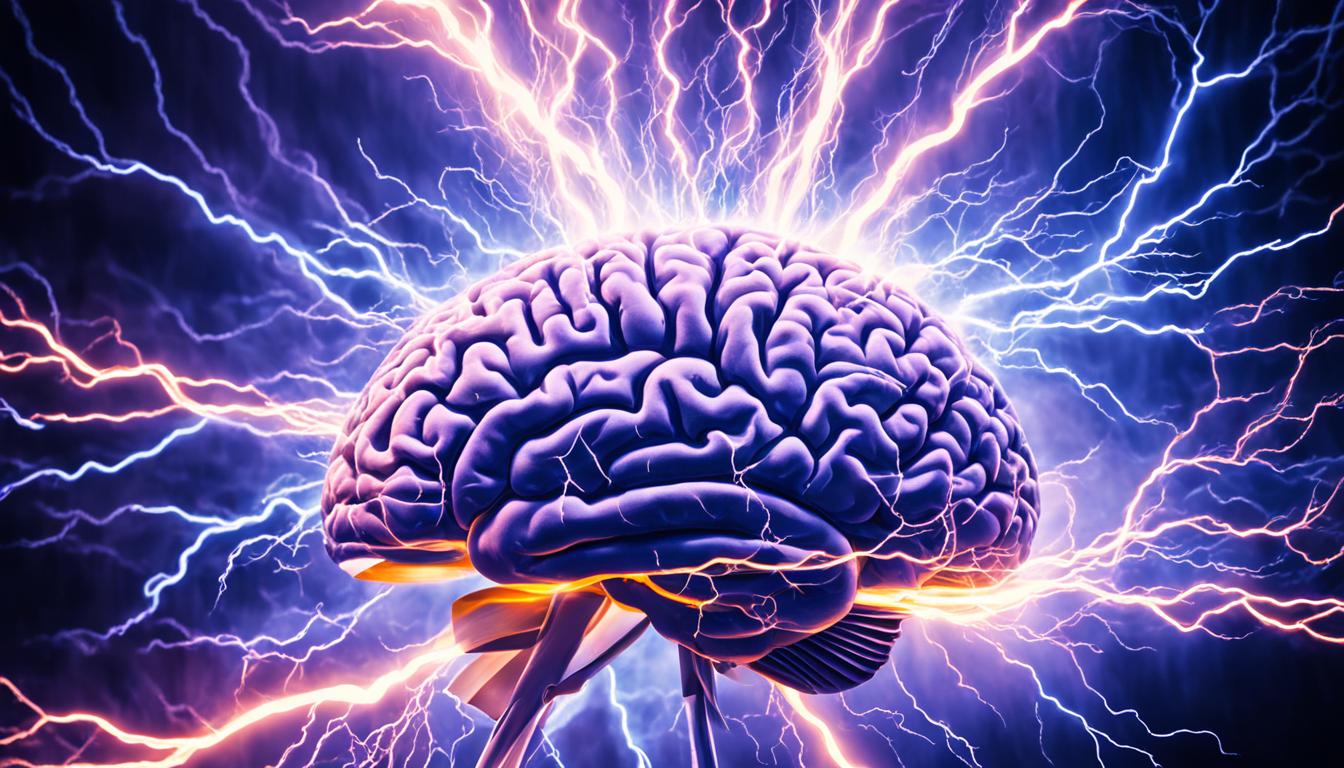Seizures are sudden changes in brain activity that cause symptoms to appear. They come in three types: focal onset, generalized onset, and unknown onset. Focal onset seizures start in one brain area and can divide into aware or impaired-aware types. Generalized seizures affect both brain sides, and there are different kinds like tonic and clonic ones.
There’s a range of causes for seizures, from epilepsy to infections and injuries. Doctors diagnose seizures by checking your medical history and doing tests like EEGs and scans.
Treating seizures can involve medicines, surgery, nerve stimulators, or stem cell therapy.
Key Takeaways:
- Seizures are sudden changes in the electrical activity of the brain.
- There are three types of seizures: focal onset seizures, generalized onset seizures, and unknown onset seizures.
- Seizures can have various causes, including epilepsy, brain infections, brain injuries, genetic factors, and electrolyte imbalances.
- Diagnosis of seizures involves medical history evaluation, lab tests, EEG, and imaging scans.
- Treatment options for seizures include medications, brain surgery, nerve stimulation, and stem cell therapy.
Types of Seizures and their Symptoms
Seizures come in many forms, each with unique signs. Knowing these types helps doctors diagnose and treat them right.
Focal Onset Seizures
Focal onset seizures start from one area of the brain. They split into two types: focal aware and focal impaired-awareness seizures.
- Focal aware seizures: In these seizures, people stay alert. They might have sudden, uncontrollable movements or sensations in one part of their body.
- Focal impaired-awareness seizures: These can make someone lose memory or feel confused. They might not recall the seizure itself or what happened during it.
Generalized Onset Seizures
Generalized onset seizures affect both sides of the brain at once. There are several kinds:
- Tonic seizures: They make muscles stiff. If this happens while standing, a person might fall.
- Clonic seizures: These cause muscles to jerk in a repeated way.
- Tonic-clonic seizures: Also known as grand mal seizures. The body stiffens, then jerks.
- Myoclonic seizures: They create quick, shock-like movements in arms or legs.
- Absence seizures: Often seen in kids, they briefly zone out or stare straight ahead.
- Atonic seizures: They suddenly decrease muscle control, possibly leading to falls or dropping things.
Seizure symptoms depend on the type and how severe they are. Signs can include body jerking, losing awareness, muscle stiffness, convulsions, staring, unclear vision, and changes in mental state or feelings.
Finding a specialist in epilepsy is crucial to fully understand seizures. They can help identify specific symptoms and guide proper treatment.
Treatment Options for Seizures
Seizure treatment changes based on what’s causing them and each person’s health. The go-to treatment often starts with medicines, called antiepileptic drugs. These help control seizures in about 70% of people. They work by managing the brain’s electrical signals to either stop or make seizures happen less often and less strongly. It’s key for those with seizures to find the right medicine and dose with their doctors.
If drugs don’t work or someone can’t take them, then there are other ways to treat seizures. For some, brain surgery might be an answer if seizures come from a known spot in the brain. Surgery removes or cuts off the part of the brain that causes seizures. This is only done if tests show exactly where the seizures start.
Using nerve stimulation is another choice. Vagus nerve stimulation (VNS) and responsive neurostimulation (RNS) are two kinds. VNS puts a device next to the vagus nerve in your neck to send electric signals. These signals can keep the brain from acting up and cut down on seizures. RNS, instead, uses a device in the brain that can spot unusual electric signals and act before a seizure starts.
Stem cell therapy is a new area in epilepsy care. Stem cells can grow into many types of cells. Early tests in animals are looking good, showing this therapy might make seizures better. But, we still need more studies to be sure it’s safe and works well for people.

